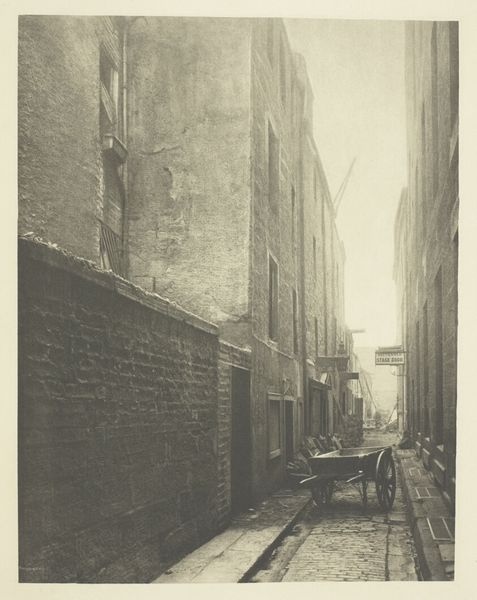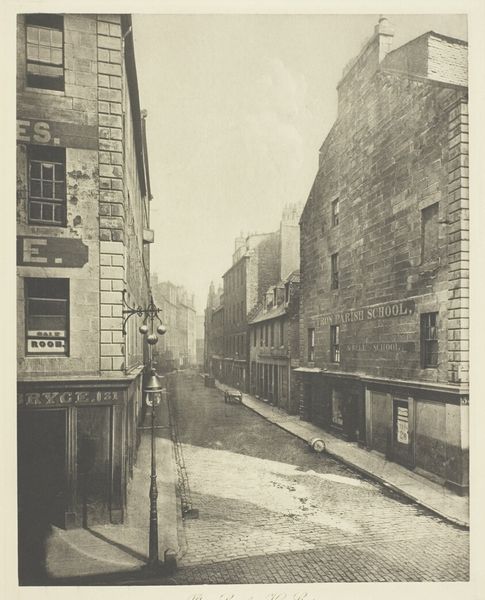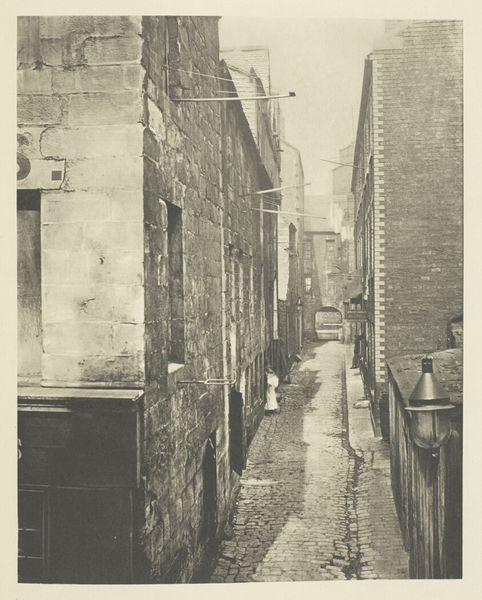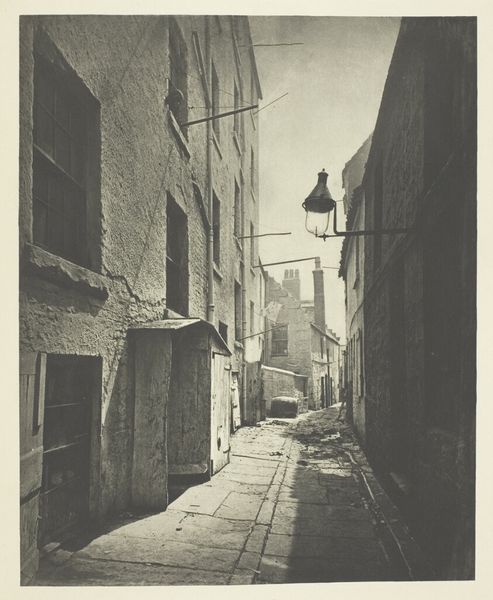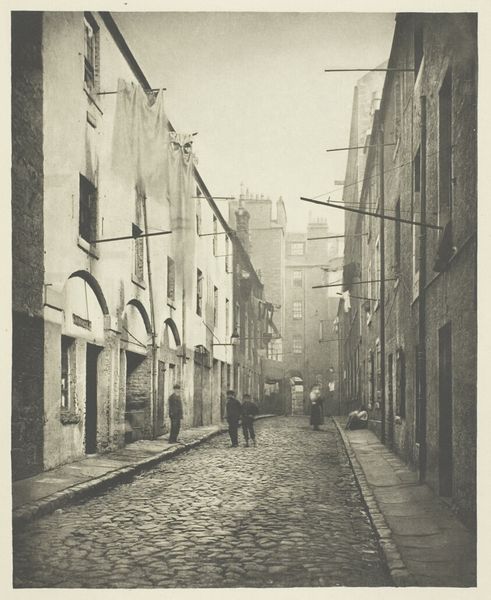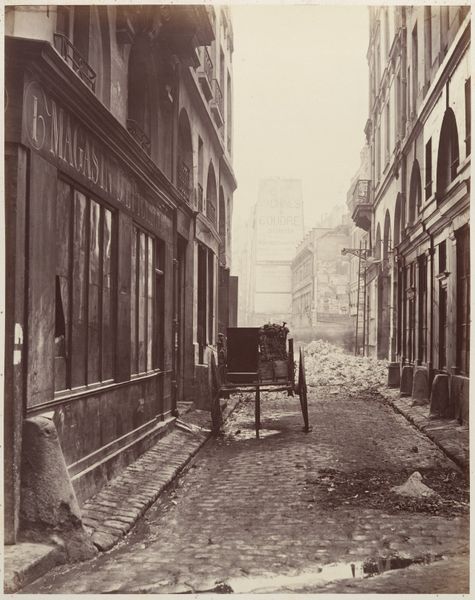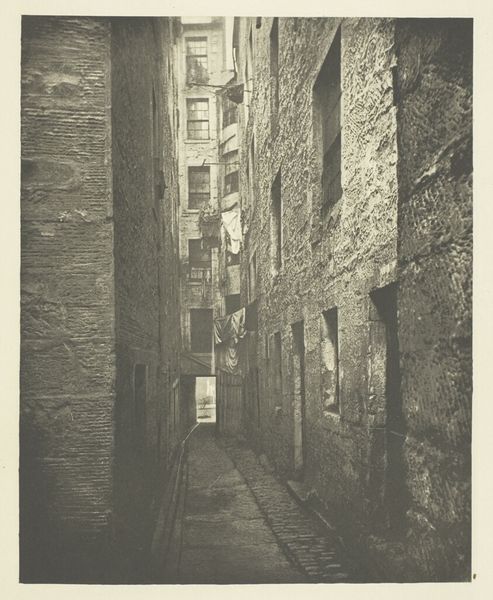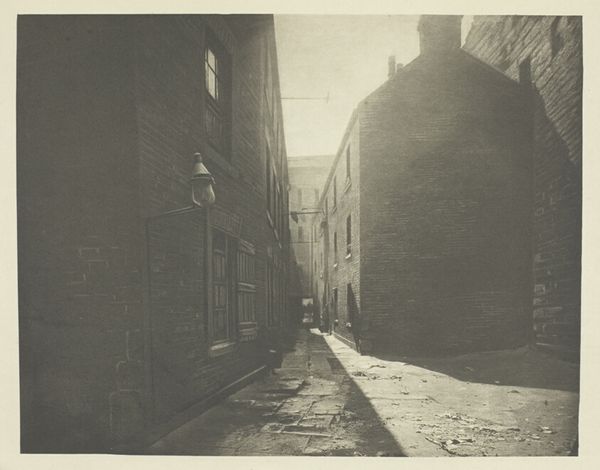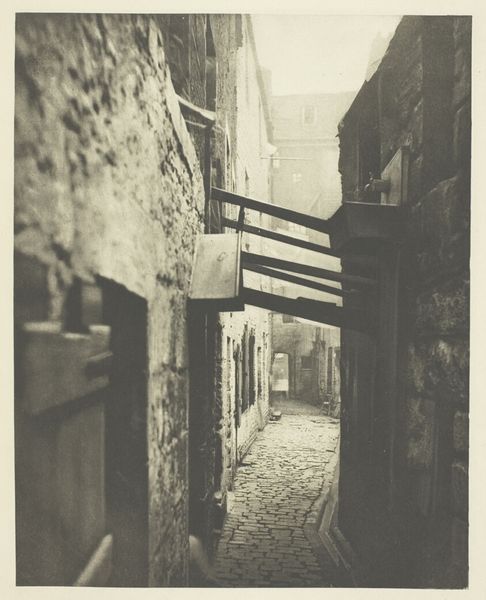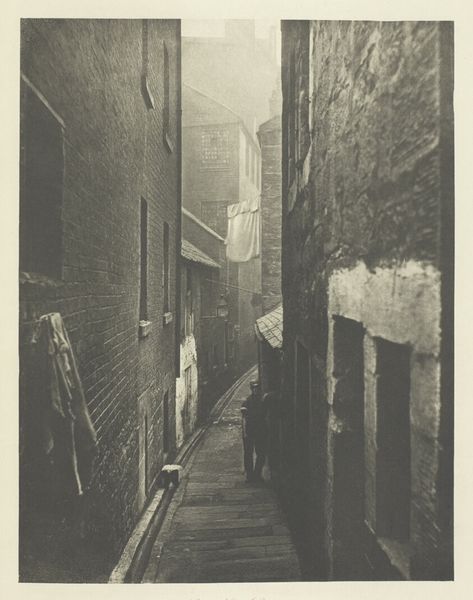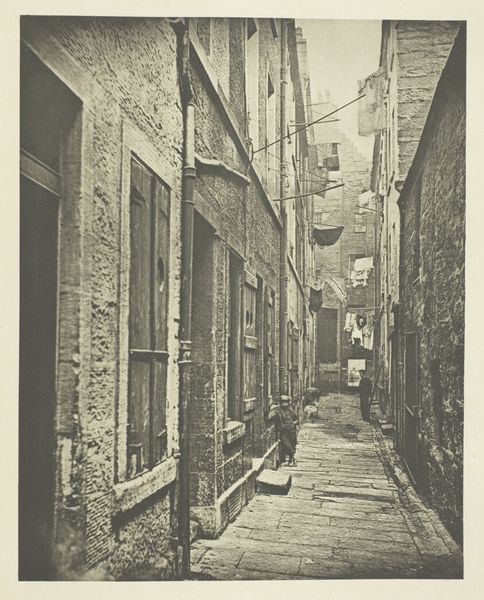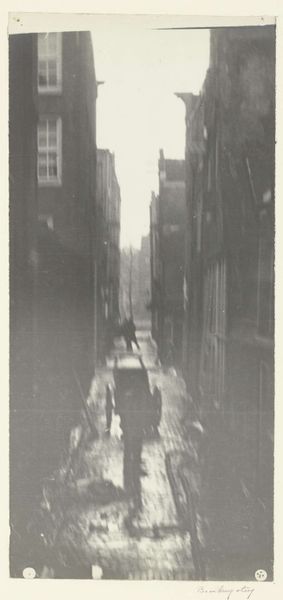
Dimensions: 21.7 × 17 cm (image); 37.6 × 27.5 cm (paper)
Copyright: Public Domain
Editor: Here we have James Craig Annan’s 1897 photograph, "St. Margaret’s Place." It’s a monochromatic street scene; the strong vertical lines draw my eye right to the hazy vanishing point. What strikes you about it? Curator: I'm drawn to how Annan manipulates the photographic process to mimic the textures and tonalities we often associate with printmaking or painting. This manipulation wasn't merely aesthetic. It was a declaration about the status of photography itself. Note the specific labor involved: the careful dodging and burning, the choice of paper stock – these all speak to Annan’s ambition to elevate photography to the level of fine art. Editor: So, it's not just about the subject, but also about elevating the craft of photography itself? How would that contrast with, say, snapshot photography today? Curator: Precisely. We must consider the conditions of production. Snapshot photography aims for immediacy and accessibility; it reflects a society of mass consumption. Annan, on the other hand, deliberately employs a slower, more controlled process. What kind of work do you think this suggests, regarding labor? Editor: I imagine it meant hours in the darkroom, carefully manipulating the image. So the photograph becomes not just a document, but a crafted object, the result of skilled labor and intention. Curator: Exactly. This resonates with the Arts and Crafts movement's focus on handcraftsmanship. We can read the very materiality of "St. Margaret's Place" as a social commentary on the rise of industrial photography and its effect on skilled labor. He draws attention to it through the aesthetic, and his engagement with printing techniques. Editor: I never thought about the social commentary embedded in the photographic process itself! It’s about who makes the image, and how. Curator: Yes, the art isn't simply the final picture; it is the work, and the decision of what and how to depict it. Annan invites us to consider the means of production as intrinsically linked to meaning. Editor: I’ll definitely be considering the materials and production processes more carefully now!
Comments
No comments
Be the first to comment and join the conversation on the ultimate creative platform.
